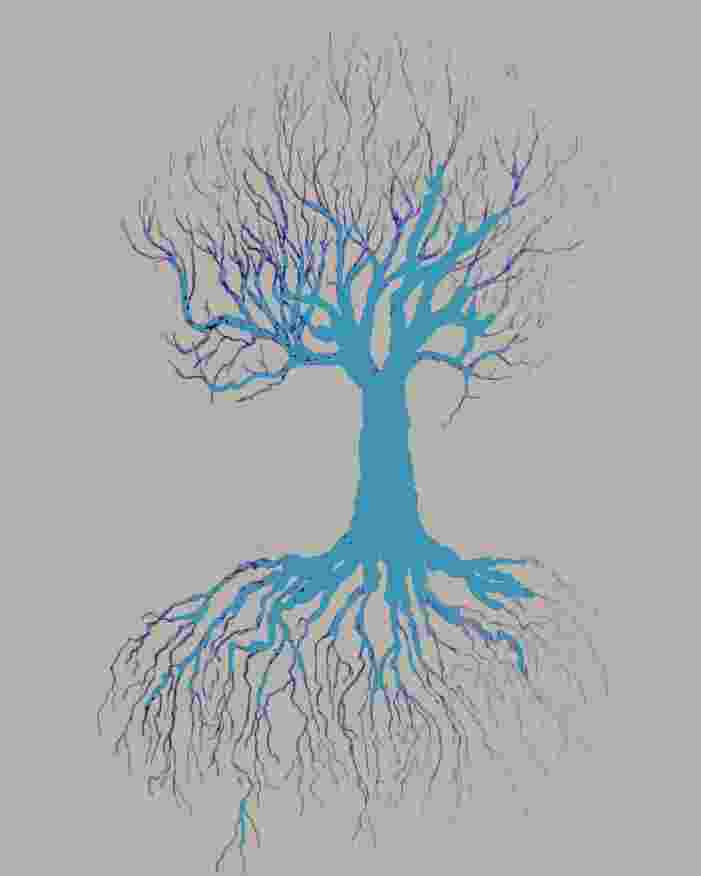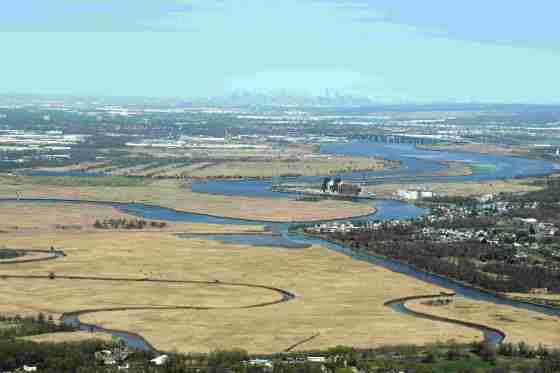Can You Imagine an Entire River System?
Article and photos by Joe Mish
An elephant is like a tree, No! an elephant is like a snake, No! an elephant is like a wall. So claimed the three of the six blind men from Indostan, when they were asked to describe an elephant. In this case their blindness is representative of a loss of perspective and in that way, reflects on our nature to define the world into segmented parcels.
Being gravity bound to the earth provides a limited view and so, it makes sense to parse the world via man made contractions. For instance, take a local county road, built to traverse through several counties, towns and cities. To ensure continuity it was given a numeric designation. County route 514 is an example. However, as it crosses geopolitical borders it gets christened with a local name. Amwell Road, Hamilton Boulevard, Woodbridge Avenue and Main Street, etcetera, collectively are the same road, county route 514.
It is human nature to tease out pieces of the whole to better grasp an extensive subject. Our education system has honed specialization of studies to create unique disciplines and professions, each treated as unrelated kin.
Over time we have lost perspective of the whole and dismantled the larger puzzle into its component pieces, forgetting that all disciples are related and taken together, are additive and complementary. Formal education has handed each disciple of its hallowed halls a critical piece of the puzzle. Much like a treasure hunt, where a map is torn into pieces and handed out to individuals to ensure all participants must bring their scraps of paper together to find the hidden gold.
When we look at rivers, our earth bound position shapes our view. We see the north branch of a river apart from the south branch, each stream that feeds into a larger waterway gets a name. As a watercourse passes a political jurisdiction, that flow of water may, in some unusual cases, get a name change, not unlike our numbered county routes. Trace a stream back to its source and discover it doesn’t get a name on a map until it crosses a roadway.
I had the opportunity at the invitation of No Water No Life founder Alison Jones to accompany her and Lower Raritan Watershed Partnership president, Dr Heather Fenyk on a complimentary flight provided by LightHawk to photograph the entire Raritan watershed from its two main sources all the way to Raritan Bay and Sandy Hook.
The transition from a ground dweller to eagle was as breathtaking as it was revealing. Instead of only seeing puzzle pieces, the entire picture of the watershed miraculously appeared. Each segment lost its defined edges as the resolution increased; as if going from a pixilated image to a crystal clear picture.
Though intimately familiar with each section of the river, I was lost when asked where we were at any given moment. I tried to rely on referencing the last known position but the speed at which we travelled, and the new cloud high perspective was surprisingly disorienting. It takes about an hour and ten minutes to drive to Sandy Hook from the point of the confluence of the Raritan and its main branches, it took only a few minutes to fly there. That alteration of time and distance also serves to overcome the linear relationship of diminishing interest over increasing distance, a lingering, innate human survival mechanism focused on serving the moment to save the day.
The value of gaining a new perspective, where the threads reveal the weave of the cloth, provided an avenue for a holistic approach to temper human impact on the watershed as an entity. A change to any geo-politically defined segment must now be considered as systemic rather than an isolated local impact. Impervious surfaces increase upstream from housing developments and parking lots to flush more water into the river and exacerbate extreme weather flooding. Crops planted in the flood plain right to the edge of the river, cause erosion and silt build up to force flood waters further from the main river course.
A good lesson to remember is the literary relationship of the word river to rivalry. The word for people drinking from the same stream or river was rival in French and rivalis in Latin. When a downstream village’s drinking water was contaminated by the village upstream, it created a rivalry. Even in early times, the wisdom of what flows downstream was well ingrained in riverine communities, a lesson somewhat lost today.
In lieu of boarding a plane, fire up your imagination. Imagination is a magic carpet that transcends available opportunity, bad weather and poor visibility to deliver needed perspective. Imagine if you can the water in the entire Raritan River watershed replaced with blue injection molded latex as a giant hand reaches down and grabs the main trunk of the Raritan River, pulls it from the earth, and holds it aloft as if it were a giant oak tree, its crown represented by the ocean. The fine mass of hairy threads leading into primary roots and finally forming a main trunk. See the river as a tree, its form and function more similar than different.

Loss of perspective is a demon that transcends all issues and stunts efficient problem solving, leads to false conclusions, lost time, and energy.
Perspective may be gained in several creative ways, though it takes imagination and an open mind to intellectually take flight to see the whole picture. Once we realize our world is one entity and the smallest change has a cascading effect far downstream beyond where we figured the ripples terminated, we are better prepared to approach business, technology, relationships, education and nature while promoting the sage advice of ‘first do no harm”.

Author Joe Mish has been running wild in New Jersey since childhood when he found ways to escape his mother’s watchful eyes. He continues to trek the swamps, rivers and thickets seeking to share, with the residents and visitors, all of the state’s natural beauty hidden within full view. To read more of his writing and view more of his gorgeous photographs visit Winter Bear Rising, his wordpress blog. Joe’s series “Nature on the Raritan, Hidden in Plain View” runs monthly as part of the LRWP “Voices of the Watershed” series. Writing and photos used with permission from the author. Contact jjmish57@msn.com.
